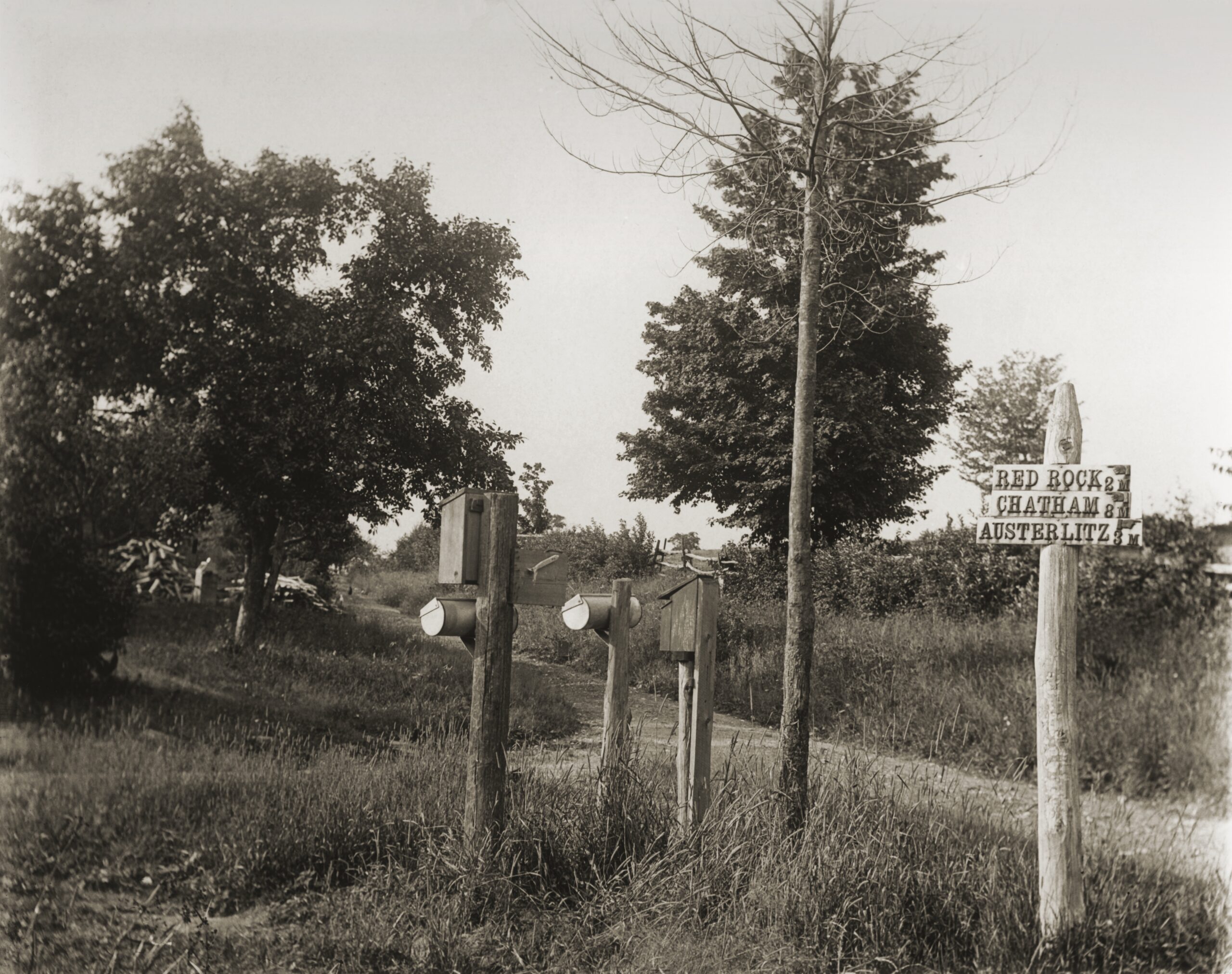A Walk to the Past
If you walk down a dirt road in Columbia County, it sometimes feels like you’re walking into the past. Silence gathers around you. There are no cars or trucks. Oaks and maples meet overhead—winter-bare, spring-green, summer-dark and in fall, incandescent. Depending on the season, there may be daffodils or acorns or hickory nuts, deer springing across the road from one tangled bank to the other, possibly a turkey pretending not to notice you. Of course—such is life—you never really reach the past. You remain afloat in the present—on the great river of time that sweeps us all downstream without actually going anywhere.
But let’s pretend.
Walking down your dirt road, what would tell you you’d left your own time behind? An unfamiliar scent from the fields nearby? A change in the way they’re fenced or the livestock fenced within them? In appearance, of course, the humans give it away—the women wear long dresses and the men, even the pair of weekend cyclists reclining on a grassy road-bank, mostly wear jackets and ties. Everyone is just a little too natty, except for the haymaking team heading toward the barn—broad hats, suspenders and an air of overheated accomplishment, which doesn’t seem to be shared by the horses, who’ve done the hardest work of all and are now ready for their grain and hay. And something about the horses seems different. Then it dawns on you: here they aren’t anachronisms–reminders of a past way of life. They belong here, on these narrowed roads, wearing blinders, standing stock-still ahead of their carriages and wagons, looking a little alarmed by the presence of the camera.
You’d feel too, soon enough, that here in the past, dirt roads aren’t anomalies or narrow, uneven precursors of our modern, paved roads. One dirt road leads to another and another, radiating outward into the world, and all of them are improvements on the trails and paths they once were. The sharp modern distinction between road and ditch doesn’t seem to prevail here in the past. When the trees open up, you can feel the difference in the landscape around you almost without noticing it—the bald, sheep hills in the distance, which are now thickly forested. Does it feel as though time has slowed down? It hasn’t. Personal time is different here—as though you’d entered a realm where the day is measured by the task, not the clock. And if you felt an urge to stop and talk with one of the barn-builders or carriage-drivers or prim cyclists, who could blame you? Where would the conversation go?
Because these photographs were taken mostly in the late 19-th century, well before reliable flash bulbs, we only get to see daylight dirt roads. But if you had any doubts about where you were—past or present—all you’d have to do is wait till dusk, when a forgotten sky would show itself overhead—stars so bright in the absence of artificial light, the Milky Way hooping across the sky like a scattered rainbow. The only lights in the houses, candles. The road dark as dark can be. Perhaps then you’d realize your dirt road had taken you into a slower and more ceremonial time, a time when humans thought just as much of themselves as they do now but had to pass each other at a much slower pace than we’re used to. They aren’t listening to an audiobook or a podcast. They’re wondering who you are, a stranger walking their way, strangely—perhaps shockingly—dressed. Whoever you are, there’s time to greet one another, to share a few words about the lateness of spring or the heat of summer. And if one of the people in these photographs asked you where you come from, you could say, just around the corner and up the road, and it would be true.
– Verlyn Klinkenborg





